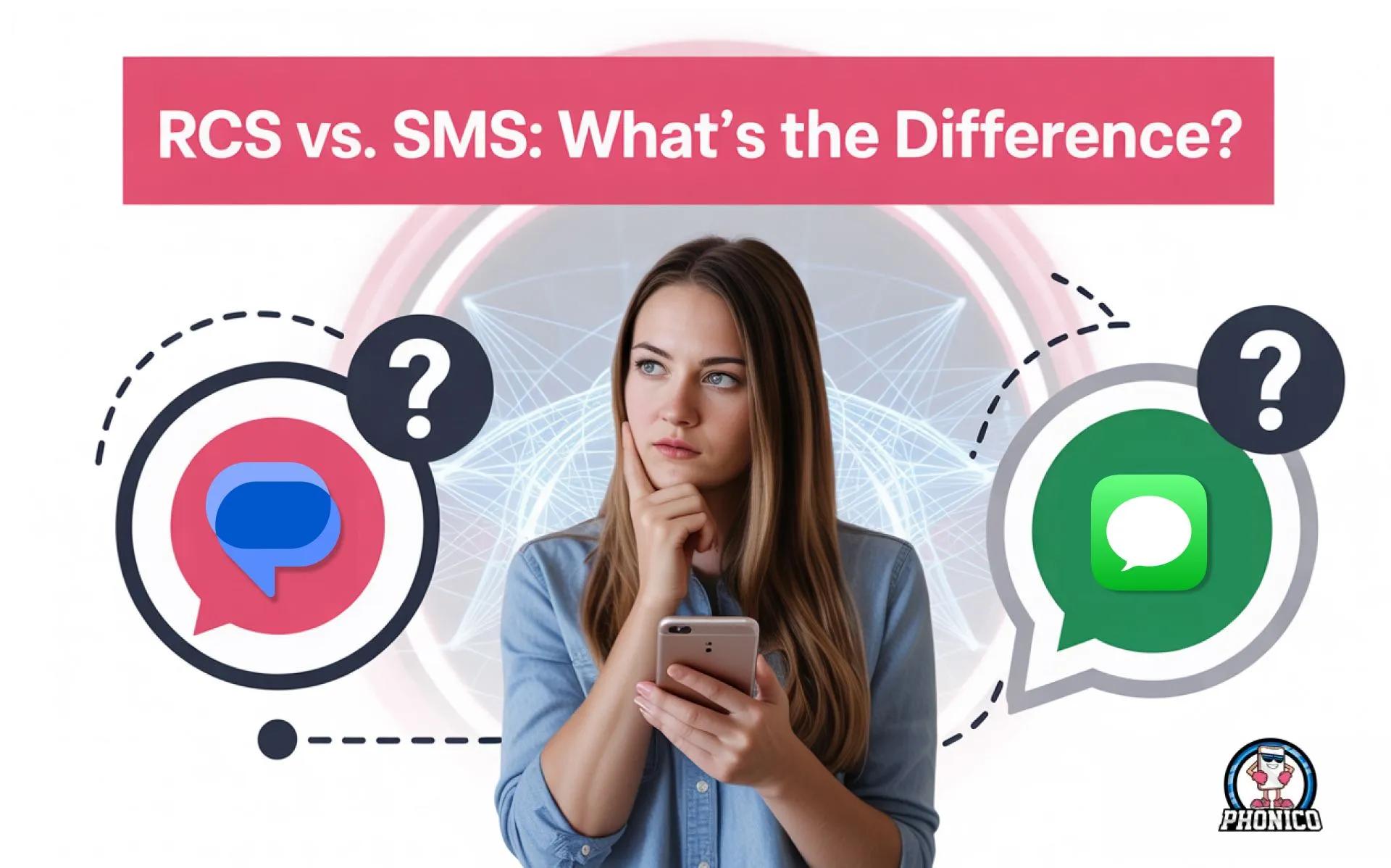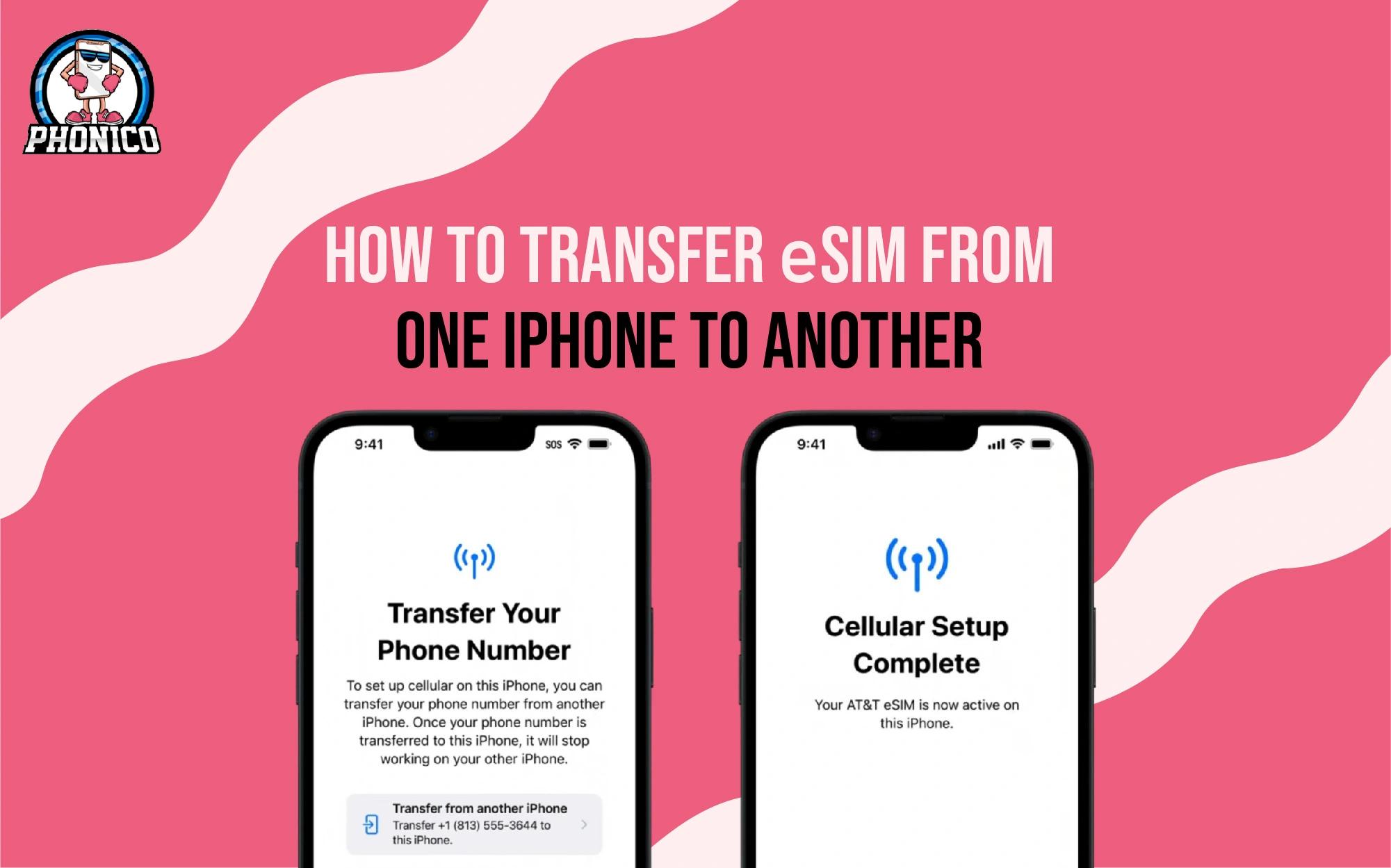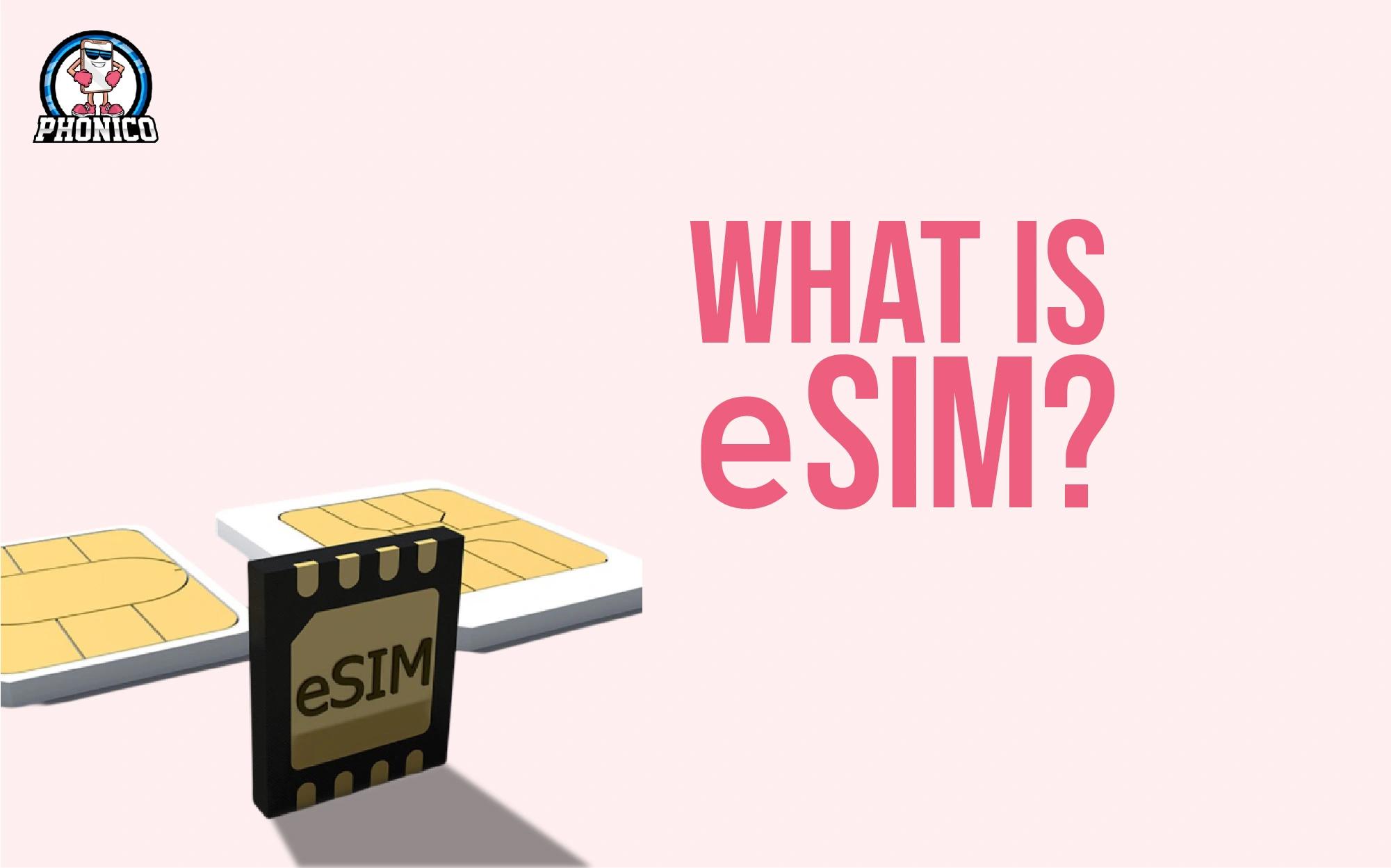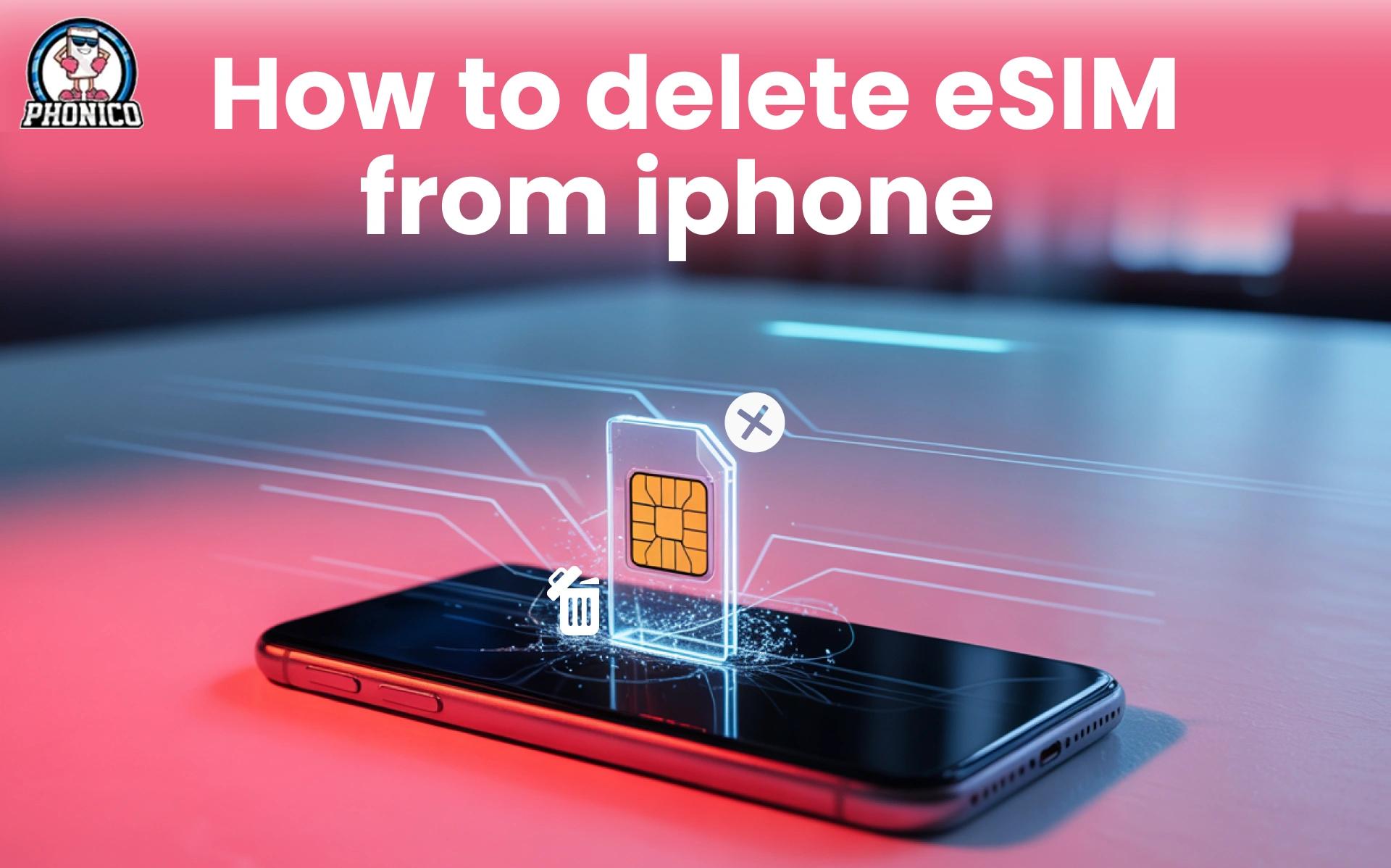RCS vs. SMS: What’s the difference?
We all started texting with plain SMS messages, which have now evolved to RCS messages. The question arises what the different is between RCS vs SMS. SMS is the plain text-only standard that uses a cellular network to send messages.
RCS, on the other hand, is the modern successor that offers high-resolution media, read receipts, and interactive elements using the internet. There are multiple other aspects essential to discuss and clarify your concept.
In this article, I will go through the comparison between RCS vs. SMS. What are are benefits and drawbacks of these, and which is best depending on your needs?
What is SMS and How Does it work?
SMS or Short Message Service was introduced as the text messaging service in 90s. The SMS messages are sent through the cellular network. The SMS is limited to 160 characters and doesn’t include sharing media files. It doesn’t require IP, Wi-Fi, or data connectivity to operate.
SMS to send and receive messages relies on the Global System for Mobile Communications protocol. The upgrade to SMS came in the form of MMS, or Multimedia Messaging Service. It includes the feature of sharing images, audio, and video.
What is RCS and How Does it Work?
RCS or Rich Communication Services is the latest text messaging evolution. Like plain messages, it doesn’t have a character limitation. It requires WiFi or a mobile data connection to send and receive the high-resolution stuff.
It is an advanced chat platform available to Android users and iOS devices starting with iOS 18. The protocol includes features like group chat, delivery of high-quality photos or videos, read receipts, and location sharing.
The messages and the rich media files are sent and received via Wi-Fi or LTE/5G IP data network services.
RCS vs. SMS: Key Differences at a Glance
Here is the comparison between the RCS and the SMS to get a clear concept.
Network Type
- RCS: Requires the WiFi or mobile data to operate.
- SMS: It works with the cellular network.
Message Limit
- RCS: No direct restriction.
- SMS: For messages, the character limit is 160.
Device Support
- RCS: Mainly the latest Android devices and iOS devices starting with iOS 18.
- SMS: All devices support SMS.
Security
- RCS: Offers End-to-end encryption.
- SMS: Basic security.
Offline Access
- RCS: It requires an active connection.
- SMS: No internet needed.
Delivery Status
- RCS: Real-time read receipts & typing indicators.
- SMS: Basic sent only.
Media Support
- RCS: Supports rich media (images, videos, files).
- SMS: Text only.
Pros and Cons of Rich Communication Services (RCS)
Understanding the pros and cons of RCS will let you know whether it's ideal for you or not.
Pros of RCS
- Supports Rich Multimedia Sharing: It lets you share high-quality multimedia messages with your family and friends without any third-party apps.
- Enhanced Security: RCS is not fully end-to-end encrypted. However, it is better in security than SMS messaging.
- Verified Businesses: Businesses can create verified profiles. It displays your logo and business in your profile and reduces spam & phishing attacks.
- Advanced Group Chats: RCS includes enhanced group chat capabilities, like creating a new chat, adding and removing participants.
- Additional Features: RCS includes features like longer messages, read receipts, and typing indicators.
Cons of RCS
- Adoption and Reach: RCS is the carrier provider service; thus, not all carriers support it. Moreover, to operate RCS, your device should be the latest and have an advanced operating system.
- Complex to Use: RCS has more advanced features, so it's complex to handle and work to set up campaigns.
- High Costs: Business messaging costs per send. Similarly, you need developers to help build RCS messages.
- Requires Internet to Work: It requires an internet connection to operate. If due to any reason, connectivity is not available, you can’t send and receive messages.
Pros and Cons of Short Message Service (SMS)
Pros of SMS
- Easy and Simple to use: Compared to RCS, SMS messages are simple and easy to send.
- All Devices Support SMS: All devices support SMS texting. Unlike the RCS, all carriers allow plain messaging service.
- Accessible and Reliable: The mobile phone has a built-in SMS app. You don’t need to download it separately from the Play Store or App Store.
- Don’t Require Internet to Work: Like the RCS, SMS doesn’t require the internet to send and receive messages. It works via cellular signals.
- Works Over Cellular Towers: You can send SMS even if the limited coverage is available. It is an ideal feature in case of emergencies.
Cons of SMS
- Limited Text Characters: You can’t send long messages on SMS. It allows only sending 160 characters in a single message.
- Not much Secure: SMS is not end-to-end encrypted. It is difficult for users to identify the spam messages.
- No Multimedia Support: SMS doesn’t offer the sharing of multimedia files. It only allows text messages.
- Limited Feature: SMS lacks additional services, including read receipts, typing indicators, or notification delivery.
How to Check if Your Phone Supports RCS?
- Open your Messages app on your Android device.
- Click on the profile photo, move to settings, and RCS chats.
- Enable the Chat Feature.
- Wait a moment for the Connected message, which refers to your phone support RCS.
How eSIM Technology Enhances Messaging Features Like RCS and SMS?
An eSIM card is a digital SIM that ensures ideal performance of both RCS and SMS. It is a perfect choice for international travellers to stay connected. Compared to a physical SIM card, an eSIM provides a stable connection to send messages via RCS.
eSIM plans are affordable than the data roaming packages. You can set up an embedded SIM in your iPhone and Android via QR code and enjoy the instant connection. If you are thinking of switching to the digital SIM for a seamless cellular network, you have to buy an eSIM card.
Compared to the ordinary carriers, I recommend that you choose the Phonico eSIM for travel to the USA.
Why is Phonico the best way to stay connected in the USA?
Weak signals, early data running out, and high data roaming charges are the common issues travellers encounter in the USA. Phonico is the solution to all these concerns. The carrier offers a variety of eSIM data plans with unlimited talk and text services.
You can buy the plan according to your travel needs without any strict contract. To visit the United States of America, don’t forget to have the phonico eSIM in your phone to access seamless connection 24/7.
Conclusion
RCS vs SMS: Which is better? It depends on the user's need. If you are the one looking for fast texting without an internet connection, SMS messaging is ideal for this. However, if you need the media-rich texting experience, RCS is the best option.
In this article, I have discussed the major differences between SMS and RCS to clarify their features. Moreover, you can read the pros and cons of RCS and SMS in the guide to get a better understanding.
FAQs
Which is better, SMS or RCS?
Compared to SMS, RCS is ideal due to its modern features. RCS offers advanced features like high-resolution media sharing, read receipts, typing indicators, and enhanced security.
What happens if RCS isn’t available on my phone?
If RCS is not available on your phone, the messages will automatically send as plain SMS.
Do RCS messages cost more than SMS?
No, RCS sends and receives messages via an internet connection without any SMS credit.







